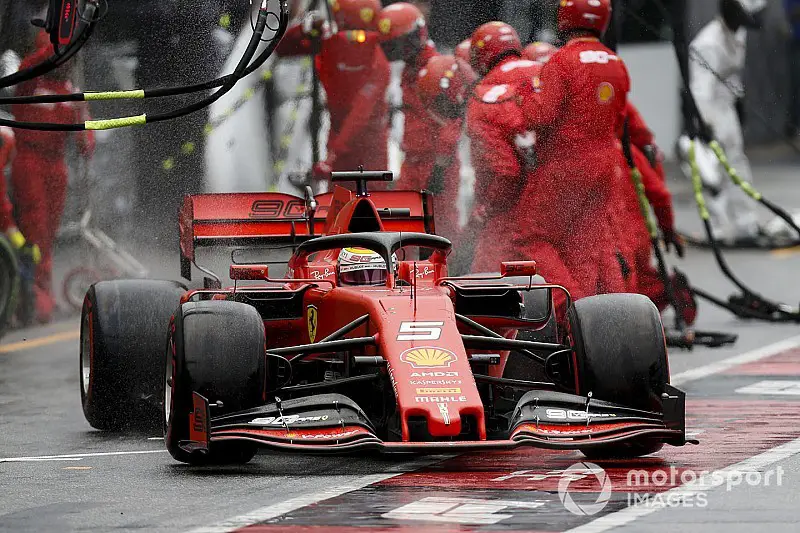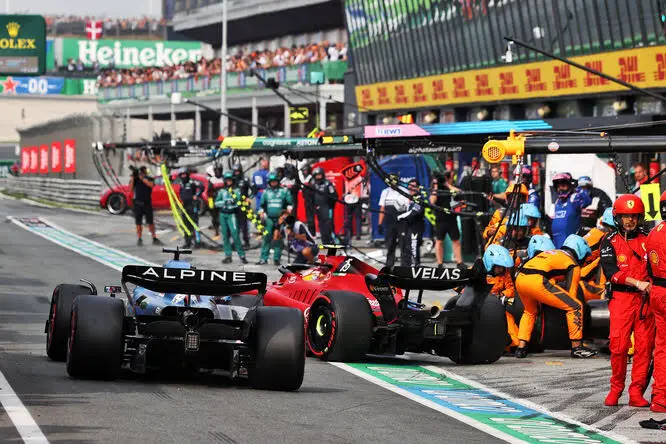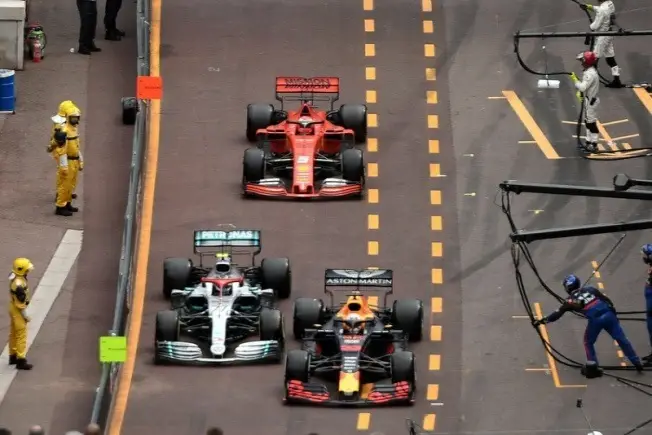Here’s everything you need to know about the concept of unsafe release in F1
In Formula 1, the concept of “unsafe release” refers to a critical safety issue that occurs during pit stops. A pit stop is a highly coordinated and fast-paced process where a racing car enters the pit lane to change tires, refuel, and make necessary adjustments. The term “unsafe release” specifically pertains to the moment when a car leaves the pit box and re-enters the racetrack. Let us take a look at some of the concerns surrounding an ‘unsafe release’ in F1.

1. Safety Concern: Unsafe release is a major concern in Formula 1 due to the potential for accidents and injuries. When a car is released from the pit box prematurely or without taking proper precautions, it can collide with other cars that are racing on the track. This endangers not only the drivers but also the pit crew and other teams’ members who might be in the pit lane at that time.
2. Regulations and Penalties: To mitigate the risks associated with unsafe releases, Formula 1 has strict regulations in place. Teams are required to use automated pit equipment to ensure the car is released safely. Additionally, the rules dictate that teams must have a designated number of personnel ready to handle the pit stop. Failing to adhere to these regulations can result in severe penalties, including time penalties, grid penalties, or fines for the team responsible.
3. Use of Pit Lane Speed Limit: Pit lanes are equipped with a speed limit to ensure the safety of all personnel and cars. Drivers must adhere to the prescribed pit lane speed limit, reducing their speed significantly when entering and exiting the pits. Ignoring this limit can lead to penalties, and it’s a key aspect of preventing unsafe releases.
4. Team Responsibility: The team’s responsibility for ensuring a safe release is paramount. Pit crews need to be highly coordinated and efficient in their tasks to minimize the time the car spends in the pit lane. However, rushing the pit stop to gain an advantage can lead to unsafe releases, which is why team communication and protocols are essential.

5. Technological Advances: In recent years, technological advancements have played a role in reducing the likelihood of unsafe releases. Automated pit equipment, such as the wheel guns used to secure tires, has become more sophisticated, improving both the speed and safety of pit stops. Additionally, teams employ real-time communication systems to coordinate the pit stops and ensure the driver is not released prematurely.
| Aspect | Information |
|---|---|
| Definition | Unsafe release in Formula 1 refers to the dangerous situation when a car leaves the pit box and re-enters the racetrack without proper precautions during a pit stop. |
| Safety Concerns | – Risk of accidents, injuries, and endangering drivers, pit crew, and other teams’ members. – High safety priority in F1. |
| Regulations and Penalties | – Strict regulations require safe pit equipment and personnel numbers. – Penalties for violations include time, grid penalties, and fines. |
| Pit Lane Speed Limit | – Pit lanes have a prescribed speed limit to ensure safety. – Violating this limit results in penalties. |
| Team Responsibility | – Teams must coordinate efficient pit stops without compromising safety. – Rushing can lead to unsafe releases. |
| Technological Advances | – Automation and real-time communication enhance pit stop safety. – Advanced equipment and systems reduce risks. |
| Safety Improvements | – Better pit lane design, release mechanisms, and protective gear improve overall safety. |
| Notable Incidents | – Bahrain Grand Prix (2019): Alfa Romeo released Giovinazzi’s car unsafely. – German Grand Prix (2019): Verstappen released with an unsecured tire. – Silverstone Grand Prix (2020): Haas released Grosjean with a loose tire. – Sakhir Grand Prix (2020): Mercedes botched a pit stop for George Russell. – Monaco Grand Prix (2021): Bottas released into the path of other cars. |
6. Safety Improvements: Formula 1 continually seeks ways to enhance safety for all involved, and this includes the pit lane. Improvements like better pit lane design, safer release mechanisms, and protective gear for pit crew members have been implemented to reduce the risks associated with pit stops and unsafe releases.
Unsafe releases have led to numerous F1 accidents over the years
Unsafe pit releases have been a recurring issue in Formula 1, jeopardizing both drivers and pit crew members. Let us take a look at some of the notable incidents.
Bahrain Grand Prix (2019): During a pit stop, the Alfa Romeo Racing team released Antonio Giovinazzi’s car unsafely, leading to a collision with a Williams mechanic. Fortunately, the mechanic sustained only minor injuries.
German Grand Prix (2019): Max Verstappen was released from the pit lane with an unsecured tire, which led to an accident with Robert Kubica’s Williams.
Silverstone Grand Prix (2020): In this race, Haas released Romain Grosjean with a loose front tire, causing a dangerous incident in the pit lane.

Sakhir Grand Prix (2020): George Russell’s race with Mercedes was marred by a botched pit stop in which a mixed tire allocation led to a double-stack pit stop, resulting in a significant delay.
Monaco Grand Prix (2021): Valtteri Bottas was released into the path of other cars during a pit stop, narrowly avoiding a collision.
Conclusion
In conclusion, the concept of “unsafe release” in Formula 1 underscores the critical importance of safety during high-speed pit stops, with strict regulations, advanced technology, and ongoing safety improvements aimed at preventing potentially catastrophic incidents. Notable past incidents serve as stark reminders of the vigilance required in this high-stakes environment.
More Formula One News
- Lewis Hamilton doesn’t support IOC’s decision on Black Lives Matter gear during Olympics
- Max Verstappen left surprised as he reaches 100 race milestone with Red Bull
- Damon Hill left in awe after Lewis Hamilton racks up 100 poles in F1 ahead of 2021 Spanish GP
Follow our dedicated Formula One page for instant Formula One news and updates

